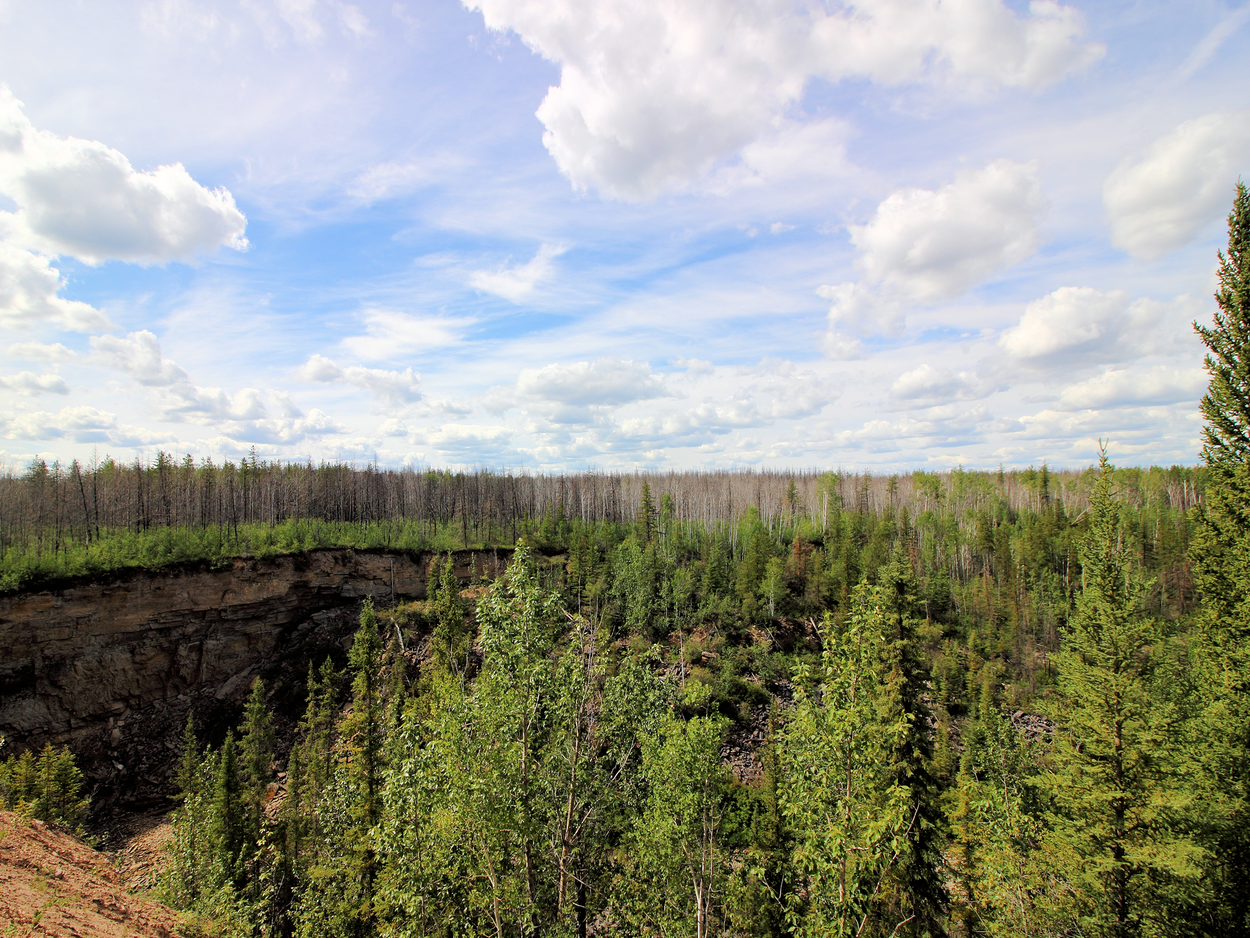The high-latitude regions store vast amounts of the global soil organic carbon. At the same time, they are highly vulnerable to warming with global climate change. Most of the carbon is stored in frozen permafrost soils that are covered by boreal forests. Boreal forest ecosystems are regularly affected by wildfires, but their frequency and intensity are predicted to increase dramatically. A byproduct of biomass burning is pyrogenic carbon that is derived from incomplete combustion of the vegetation during wildfires. Pyrogenic carbon has a higher chemical stability than its initial biomass and consequently a higher resistance to decomposition. Therefore, it contributes to a long-term carbon pool that might compensate wildfire emissions. Its quantification and also age in mineral soils of the high-latitudes, however, is not fully assessed hence its dynamics are unknown. We found millennial-aged pyrogenic carbon in permafrost-affected mineral soils in the Mackenzie River region in Northern Canada. Pyrogenic carbon was much younger in soils further south in the catchment where discontinuous permafrost occurs. In all cases the pyrogenic carbon was consistently older than the overall soil organic carbon, underlining its higher persistence. Our findings show that the present pool of pyrogenic carbon is dominated by an older fraction that even originates from fire intense early Holocene periods. Surprisingly, pyrogenic carbon consistently contributed to around 7% of the total soil organic carbon in the studied mineral soils, which did not reflect the variability we observed in ages. The age and quantity of pyrogenic carbon was controlled by soil and site properties, which will, together with the permafrost, change in the future. We conclude that pyrogenic carbon is an important and substantially aged pool in permafrost-affected soils and it needs to be considered in regard of future climatic changes and the carbon cycle of the high-latitude regions.
Scroll to top

![[Translate to English:] [Translate to English:]](/media/_processed_/6/4/csm_titel_CO2Kampagne8_afeea2273e.png)
![[Translate to English:] [Translate to English:]](/media/_processed_/4/1/csm_titel_93px_CO2Kampagne8_9b0f3354d4.png)

![[Translate to English:] Logo des Bundesministerium für Ernährung und Landwirtschaft](/media/allgemein/logos/BMEL_Logo.svg)